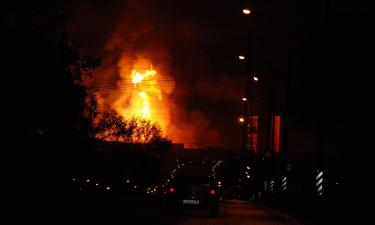US intelligence notices less activity in Russian nuclear submarines
The Federation of American Scientists (FAS) has registered the reduction of combat duties of Russian submarines, while the duties of nuclear submarines became more frequent in such countries as the USA, the UK and France.

Today about 20 percent of Russian ballistic missiles (624 warheads in all) have naval deployment. By 2015 their number may increase up to 30 percent due to the decommissioning of land-based carriers. China possesses such ships, and India will have them at its disposal, however, they are not included in the research, the Vzglyad newspaper said. In late 2007 Russia’s Navy comprised eleven submarines equipped with ballistic missiles with nuclear warheads. In 2007 they carried out three battle cruises, although there were five cruises performed in 2006. Within the same period of time 14 US nuclear submarines fulfilled 54 combat cruises.
According to the US specialists, Soviet submarines carried out 103 cruises in the 1980s, during the Cold War, but in 2002 Russian nuclear submarines did not fulfill their patrolling duties at all.
Americans underlined that the reasons for low activity of Russian strategic submarine forces are unlikely to be financial. According to the researchers, the flights of the strategic aviation grew in number.
Unlike France that has neither long-range aviation, nor land-based missiles, Russia can diminish its presence in the World Ocean, which US specialists mentioned outspokenly and described the low possibility of a large-scale nuclear war as one of the most plausible reasons for the current situation.
Russia has the world’s sixth biggest defense budget and it can obviously allocate funds for combat patrolling of its submarine forces. Nevertheless, there is no denying the fact that Russia has real problems with strategic submarines.
Apart from the well-known and continuing story with completion of The Yury Dolgoruky cruiser, a Borey-class nuclear submarine (there are still no missiles), the Russian Navy experiences the acute labour crisis.
Formerly, it was a common rule to have two trained crews for each Borey-class nuclear missile submarine. Now mixed crews from different ships usually work at Russian nuclear submarines. It will take long time and much money to improve the situation – submariners need to undergo a long training.
Russian Navy’s Commander-in-Chief Vladimir Vysotsky stated in April that the first Borey-class missile carrier will be transferred to the Navy by the end of the year.
According to Vysotsky, now about 95 percent of construction is completed at The Yury Dolgoruky. But nobody hopes that the Bulava missile will be competed during the remaining time.
However, a quantitative reduction of strategic submarines is not a temporary phenomenon connected with the substitution of overage ships. According to Vysotsky, as soon as new submarines are put into operation (there will be 13 submarines after 2010), Russian nuclear submarines will return to regions of combat patrolling. Moreover, new ships will go first of all to the Pacific Ocean, where the problem of old fleets is more serious than in the Northern Navy.
Naturally, a submarine can use its own missiles as soon as it recedes from the pier, but in this case the vessel will be vulnerable to attack. Russian submarines will start to perform its patrol duties sooner or later.
Translated by Julia Bulygina
Pravda.ru
Subscribe to Pravda.Ru Telegram channel, Facebook, RSS!





